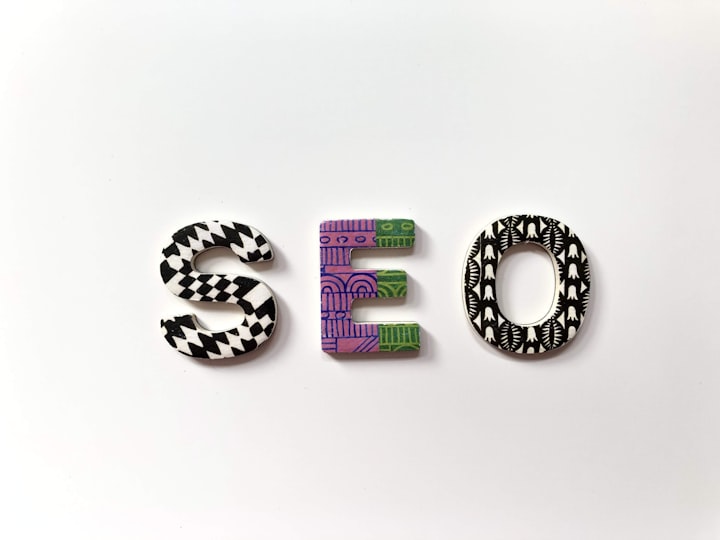SEO Checklist - SEO Best Practices You Should Follow
On-page SEO, often known as one-site SEO, is the process of optimizing web page content for search engines and people. On-page SEO tasks BY SEO services such as optimizing title tags, internal links, content, and URLs are common and vital for developing a good digital marketing plan. Off-page SEO, on the other hand, focuses on improving signals that occur outside of your website, such as backlinks.
On-page SEO, often known as one-site SEO, is the process of optimizing web page content for search engines and people. On-page SEO tasks BY SEO services such as optimizing title tags, internal links, content, and URLs are common and vital for developing a good digital marketing plan. Off-page SEO, on the other hand, focuses on improving signals that occur outside of your website, such as backlinks.
Why is on-page SEO important?
On-page SEO allows search engines to examine your website and the information associated with it in order to decide whether a searcher's query is relevant to your site. Google is always updating the algorithm so that it can correctly read the searcher's intent and generate search results that are relevant to the user's needs. With Google's ever-changing algorithm, you must also maintain your website up to date.
According to Google's own "how search works" study, "the most fundamental indicator that content is relevant is when a website has the same phrases as a search query."
An examination of 11 million search results reveals a link between keyword-rich title tags and high ranks. When you search for a competitive term, you'll notice that the top-ranking websites use the precise term in their title.
Let's have a look at what you need to do to optimize your content for on-page SEO.
1. Write the title of your blog in an H1 tag
H1 acts as a mini title tag. Google itself has stated that including an H1 tag in a blog helps it understand the structure of the blog post or webpage. There are platforms that automatically add an H1 tag to the title of your blog.
2. Write the subheadings in H2 tags
Make it a practice to include your target keyword in at least one subheading. And write the subheadings in H2 tags. However, don’t go overboard with including the keywords. The best practice is to include your keywords in 50-60% of your subheadings.
3. Include your target keyword at the beginning of your blog
This is an old school on-page SEO practice by different organic SEO services that is still relevant for your rankings. You simply need to use your target keyword in the first 150 words of your blog. This is important because Google takes into account the terms that show up at the beginning of your blog or webpage. It shows that you are being clear about the rest of the blog at the start itself. It is one of the tiny things that helps Google know what your blog is all about.
4. Maintain proper keyword frequency
Keyword frequency is the number of times your target keyword is used in the content. Google might say that using the same keyword, again and again, will not help. However, that’s not the case. A majority of SEO professionals have proven that it definitely works.
5. Optimize your title tag
Your title tag is one of the most important factors of on-page SEO. It provides search engines an overview of what your page is all about. According to experts, the closer the target keyword to the beginning of your title tag, the better it is for higher search engine rankings. It is not necessary that the keyword has to be at the very beginning. It will not make sense to do that every single time. However, the closer it is, the more weight it carries for search engines.
6. Use title tag modifiers
You can rank for long tail versions of your target keyword by using title tag modifiers like ‘best’, ‘free’, ‘guide’, ‘checklist’, etc.
7. Optimize your URLs for on-page SEO
URLs are an underrated part of on-page SEO. They are not necessarily noticed by readers, but the terms that you use show up right above the title tag. That’s why they need to be optimized for on-page SEO by SEO on-page services. You can make your URLs SEO-friendly by making them short and including your keyword in every URL. It’s not necessary that you need to include only a keyword in the URL. It’s perfectly fine to add an extra word or two.
8. Include outbound links
External links to similar sites help Google find out the subject of your page. It also tells Google that your page is a platform for quality data. Reboot conducted a study for this, where they created 10 new websites. 5 of them had outbound links pointing to authority sites like Oxford, and 5 of them had no outbound links. And obviously, the websites with quality outbound links outranked the ones with no links.
9. Include internal links
Internal links are probably one of the most ignored link building strategies for on-page SEO by organic SEO services. Investing time to improve your site’s internal link approach almost always drives significant benefits very quickly. Some marketers see very quick gains from including even one or two internal links from high-authority pages anywhere on your site. Thus, begin to identify pages that need to be linked to other pages.
10. Optimize your meta descriptions
Google’s SEO starter guide states that adding a description meta tag to each of your pages is always a good practice. Google recommends that you craft out your own meta descriptions as you know your content best. If you don’t write a meta description, Google will pick up any snippet from your content and show it in the search results. A well-written meta description can boost your organic click-through rate. Also, you should include your target keyword once in the meta description.
11. Write unique content
Google hates plagiarized content. If the content on your blog or page is duplicate, you’ll not get ranked in the search results. Your content should be unique and free from plagiarism. However, while emphasizing on ‘unique’, we are not talking about just duplicate content.
12. Write valuable content
Crafting out unique content is a great start point. But, it’s not enough. As a huge number of blog posts are published every single day, you need something to stand out and get noticed. To make your content valuable, you can add images and screenshots of steps. They will make it easy for people to put your content into practice. Update your content regularly even after publishing and add new strategies and tips.
13. Find and fill in missing meta descriptions
We discussed including meta descriptions earlier. Specifically, we saw that your descriptions should highlight the essence of your page and it should include your primary keyword. However, if you are stressed about writing an amazing description, know that just having a meta description will be enough.
Pages that have a meta description receive 6% more clicks as compared to the pages with a missing meta description. Thus, conduct an on-page SEO audit by SEO services to find out pages that don’t have a meta description and add them.
14. Find and fix duplicate and truncated title tags
We already know that title tags are an important part of on-page SEO by SEO on-page services. While you craft out the perfect title tags for your new pages and blogs, don’t forget the old ones that are already there on your website pages. If you have duplicate title tags, they’ll not show up in search results.
Truncated title tags are the ones that are too long and you’ll see three dots at the end and viewers will not be able to completely see the title in search results. All these issues will show up in your site audit and you can take appropriate actions to correct them.
15. Do a content audit
For quite some time now, search engine optimizers have seen huge benefits from pruning site content. Basically, this means the removal of content that doesn’t rank or contribute positively, and isn’t really supposed to be on your site. The time that you spend doing a content audit and pruning low-quality content is greatly underrated. You need to understand that if any piece of content is not adding value, it needs to be removed.
16. Use Question title tags
According to research done by Brian Dean’s team, question-based title tags had a higher click-through rate. 5 million Google search results were analyzed to find out why some pages are being clicked on over others. Thus, whenever possible, you should include a question in the title tag.
17. FAQ Schema
Adding schema doesn’t help your on-page SEO directly. However, it is possible to connect with rich snippets using certain types of schema. And rich snippets can help you in increasing your click-through rate. Review schema and FAQ schema are the two best types for linking to rich snippets.
18. Include the current year in title
Writing the current year in your title tag and meta description is not going to make or break the CTR. But, according to our experience, it does make a difference, especially when the content is expected to get outdated very quickly.
19. Use original images
It is a normal tendency to use stock images in blogs as preparing unique images can be time-consuming. But, these stock images can hurt your on-page SEO by SEO on-page services. In an experiment, a bunch of websites were analyzed. Some of them had stock images and others were loaded with unique and original images. Needless to say, the websites with original images outranked the ones with stock photos.
20. Add alt text to images
You should add a descriptive file name and alt text to each image on your website. This will help Google as well as visually impaired users in knowing what each image wants to show. If possible, optimize some images by including your target keyword in the image name and alt text. The reason behind optimizing the images for SEO by organic SEO services is to give search engines a clue of what your page is about. It can help your page rank higher in search results.
21. Optimize your page speed
Google reported that the page loading speed is an important SEO ranking factor. As per the assessment of 5.2 million websites, you can enhance the site loading speed simply by shifting to a faster host, removing third party scripts, and reducing the total size of your page.
About the Creator
Amit Kumar
Full-time thinker & part-time writer...







Comments
There are no comments for this story
Be the first to respond and start the conversation.